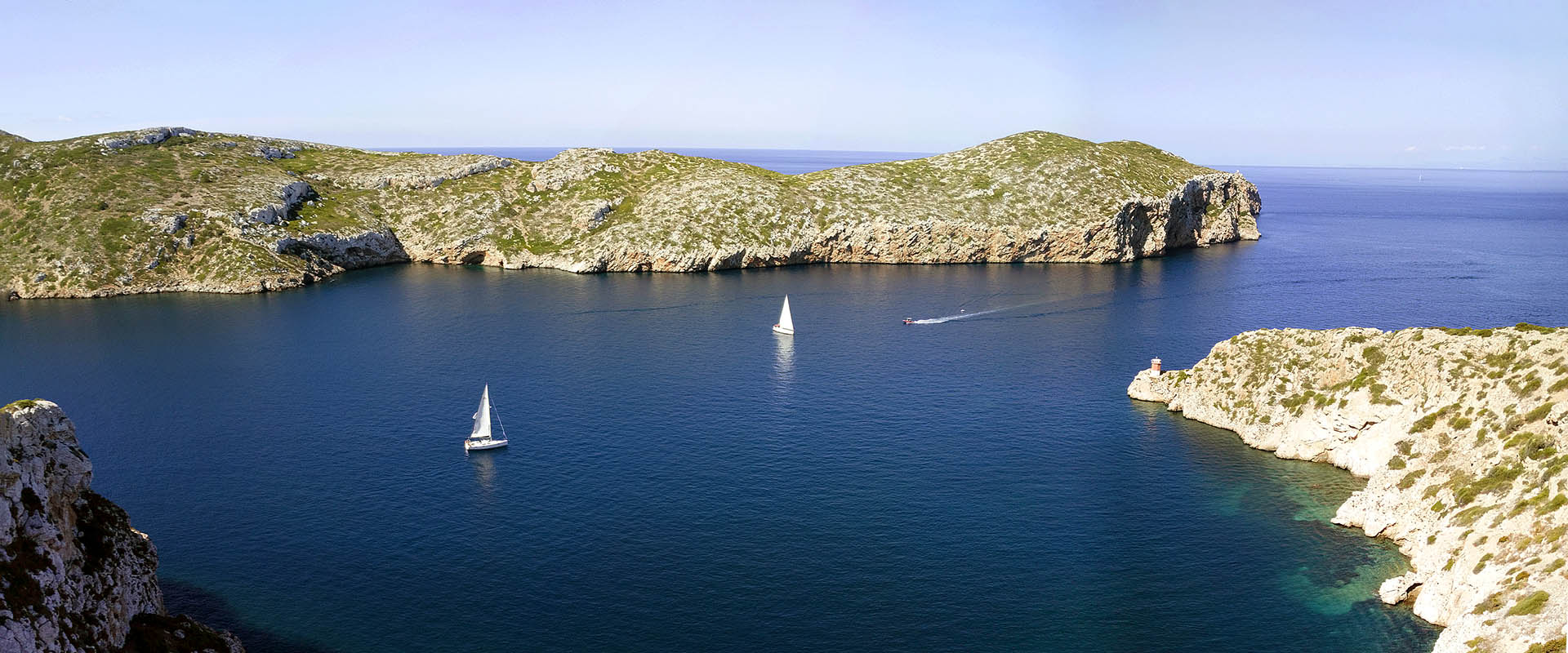Liveaboard Diving in Spain
The clear waters and curious marine life make diving on the islands, both in the Mediterranean and on their oceanic archipelagos, a varied and fascinating experience.
Spain has a long and rich history of diving. The islands are home to several marine and on-land natural parks, bursting at the seams with wildlife above and below the waterline.
Small ship diving cruises are Spain's most common type of liveaboard, offering a warm, personalized Spanish touch to a wonderful diving experience.
Liveaboard Dive Trips to Spain
Divers will find great flexibility in diving liveaboards to Spain. In particular, those hoping to dive in Ibiza and Formentera can choose between a week-long itinerary, five days, or just a weekend for those with a tight schedule. In Ibiza and Formentera, divers can choose the Sea Cucumber, a small 9-person sailing cruiser with an onboard compressor and kayaks for exploring the coastline.
Liveaboards in the Canary Islands are usually around a week-long, given the time to sail between Tenerife and La Gomera. This allows divers to spend several days at both islands' best dive sites. The diving liveaboards in Spain are mostly sailing ships, which provide a tranquil crossing between islands and small group sizes of around 8-12 passengers.
Dive Areas of Spain
On the Eastern coast of mainland Spain, the Balearic Islands are a world-famous destination for holidaymakers, thanks to their natural beauty and plentiful sunshine. These islands are also home to some of the best waters for diving, not only because of the clean, warm water but also a unique underwater plant species: The Posidonia.
All around the islands of Ibiza and Formentera, the underwater Posidonia fields of this fascinating seagrass are home to a wide variety of marine life to enchant even the most experienced divers. Octopus, eels, and cuttlefish can be spotted using seagrass as cover while hunting, and you can see the occasional turtle feeding here.
Along the coast, away from the Posidonia fields, there are several rock reefs and caves at Cala d'Albarca and The Cave of the Light.
Divers can also visit The Platform on a diving liveaboard to the Balearic Islands in deeper waters. This colossal structure, once a fish farm, is ironically still home to huge shoals of barracuda, sardines, and groupers using the platform as a hiding place and hunting ground.
Spain also enjoys several oceanic dive sites thanks to its archipelago in the Atlantic:
- Canary Islands liveaboard diving offers a range of diving experiences, from wrecks and artificial reefs to stunning marine parks.
- Tenerife offers various sites, including some of the most fascinating underwater topography on the archipelago. The island’s volcanic history has left behind huge lunar-like rock formations of yellow ash and volcanic caves such as La Cueva de Los Cerebros (cave of the brains). This cave is named for the brain-like appearance of the volcanic rocks and living coral.
- On the tiny island of Gomera, divers will find rocky reefs and caves home to many rays, eels, and angel sharks.
When to Go Liveaboard Diving in Spain
- The spring and summer months are the most popular for diving in the Mediterranean, with long sunny days and warm waters, though diving is possible later in the year.
- A Canary Islands liveaboard benefits from the ‘eternal spring’ the archipelago is famous for. There is a slightly lower temperature in the winter and early spring, but it is minimal.
- Visit from May to July to spot seahorses in the Canary Islands.
Tips for Travelers
- With oceanic currents in the Canary Islands and thermoclines in Ibiza and Formentera, divers might find the temperature warrants a thicker suit than it seems from the surface temperature.
- Photographers should be ready for plenty of macro shots, especially in the Posidonia meadows around the Balearic Islands.
- As well as diving, liveaboards in Spain offer walking and cultural experiences, so bring your walking shoes plus a light jacket for the misty forests of La Gomera.
How to Get There and Ports of Departure
- Diving liveaboards in Spain’s Balearic Islands depart from the beautiful port town of Burriana. The port is easy to access from Castellon Airport, which is only a 30-minute drive from Burriana. Castellon is a small airport that only offers flights from London, Budapest, Bucharest, and Sofia.
- Valencia airport is slightly further away (50 minutes from the port) but receives flights from most major European airports.
- Some liveaboards to Ibiza and Formentera also depart from the more southern port of Denia. Valencia and Alicante airports are both excellent options for this port of departure.
- Most Canary Islands liveaboards depart from Tenerife because La Gomera's airport is quite small, only offering inter-island flights. Tenerife South Airport offers flights from various European destinations, connecting flights outside Europe through Madrid or London. For more options, flying to one of the other Canary Islands, such as Gran Canaria, Lanzarote, or Fuerteventura, and flying or ferry to Tenerife is possible.











